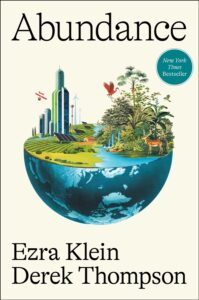As the Provincetown Independent keeps reporting, the Outer Cape has a desperate shortage of affordable housing. The consequences include dwindling enrollment in the public schools, as parents of school-age children can’t afford to live here. Neither can many working people who grew up here. This affects everyone, as towns have trouble recruiting public employees, restaurants are short-staffed, and homeowners can’t find plumbers, electricians, or carpenters.

Like Tolstoy’s unhappy families, each of the towns on the Outer Cape arrived at its painful situation in its own way. But there is a common pattern. Opponents of new housing development are better organized than supporters, and planning authority is fragmented.
A shortage of buildable land, however, is not one of the problems. The former driving range in Eastham could accommodate hundreds of units, but it has been the subject of much local contention. Likewise, one-time campgrounds. The former North Truro Air Force Station, where Payomet operates, has even more land, but control over development plans is fragmented between the National Seashore, which owns it, and various other authorities that would also need to approve any proposal.
There are several initiatives currently in the works, such as a 36-unit project now under construction on Captain Bertie’s Way in Provincetown with a mix of mostly market-rate and some “affordable” condos. But most efforts to create affordable housing take many years — sometimes a decade or more. Nor is the problem a lack of subsidy dollars, since the formula is well established of requiring developers to set aside a percentage of affordable units as part of market rate development.
I thought of our local situation as I was reading the much-remarked-upon book Abundance by Ezra Klein and Derek Thompson. I should note that Klein is a former colleague — he was a writing fellow and then a staff writer at the American Prospect, where I serve as founding co-editor. He is now a New York Times columnist and a cut above most people in that trade, because Klein tends to do his homework.

The authors’ point is that there is plenty of abundance in America, but it is fenced off from its potential by too many opportunities to block it. Somewhere between Robert Moses, who got things done with dictatorial powers by crushing everyone in his path, and the rise of interminable environmental impact statements, irlost they way. A compounding factor was the Not In My Back Yard effect.
Klein and Thompson argue that a lot could be accomplished simply by zoning reform, allowing multi-family homes in places now zoned for single-family only. They cite Houston (no zoning at all) versus L.A. (lots of zoning) and note that the cost of housing is far lower in the former.
The Klein and Thompson have been widely criticized for leaving out the issue of the income distribution and the related maldistribution of power. Yes, there is plenty of potential abundance in America, but far too much of it has been captured by the top one percent. With a more equal distribution of income and wealth, there would be no shortage of abundance.
Housing, the authors’ particular interest, is a special case. Even with zoning reform, it would take a lot of subsidy of first-time homeowners. And homeownership rates, especially among Black people, were devastated after 2008 by the sub-prime mortgage scandal, which in turn was the result of too much deregulation, not too much regulation.

Klein and Thompson also leave out an interesting nuance. They admire and applaud the YIMBY (Yes In My Back Yard) movement — local people who welcome more housing and support cutting red tape. But as an extensive report in the housing publication Shelterforce shows, a lot of the YIMBYs are no friends of affordable housing and even less of tenants’ rights. They are often developers and their allies who want more housing but frequently oppose advocates of low-rent housing and unions commanding decent wages in construction.
Another nuance is that many decent local people cherish the essentially rural character of special places like the Outer Cape. They tend to oppose overly dense housing but not necessarily affordable housing, while others want the Cape to become more like the Hamptons.
Klein and Thompson have a fair point that the process could be more streamlined. But unless we want to run roughshod over local democracy and appoint our own Robert Moses, local civic decisions are time-consuming and messy.



